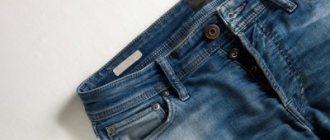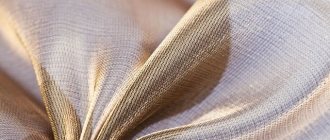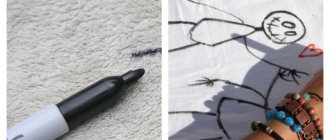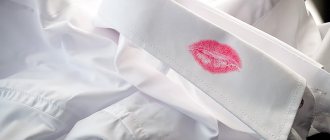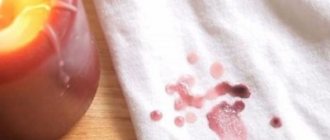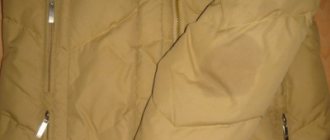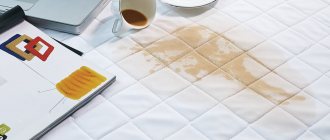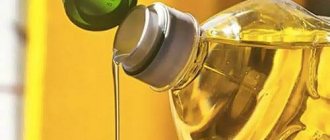If ironed carelessly, iron stains and scorch marks may appear on items. Synthetics are especially prone to this problem. Stains may appear differently on fabric depending on the type and color of the material, as well as the temperature and duration of ironing. So, on white, tan marks appear in colors ranging from yellow to brown. The hotter the iron and the longer it remains on the fabric, the darker the stains will be. Viscose tends to burn and stick to hot soles. Shiny spots from the iron appear on black.
However, regardless of the reasons for the appearance of marks or their type, it is possible to remove iron stains from clothing without throwing away the item or calling in dry cleaning specialists for help.
Hot iron is treacherous. They used to kill them.
It can still ruin or kill your clothes. But we know how to prevent this from happening.
Here are complete instructions for cleaning clothes from such stains. For ease of navigation, use the table of contents.
Table of contents
Fabric preparation
How to remove shiny spots
On black fabrics and wool (trousers, coats, suits)
From linen
From cotton
From silk
How to remove remaining scorch marks
On black or wool
On white
On colored
On synthetics, polyesterOn the couch
On the carpet
How to remove stubborn iron marks
How to prevent iron stains
Conclusions
Video: how to remove iron stains from fabric
Did you burn or stain your favorite clothes with an iron? Don't worry, this can happen to anyone.
A yellow stain, scorch mark, lace or other iron stains on fabric is not a reason to throw away your clothes. This is the first time this has happened to you, and you don’t understand whether it’s possible to restore the original appearance of your favorite shirt or dress? Everything can be resolved. We have compiled a selection of tips for you on how to effectively remove iron stains from clothes.
There is one condition: scorch marks without holes.
Clothes with holes, no matter how many pleasant emotions they evoke in you, will have to be thrown away... But we have good news for you too. At the end of the article you will find iron handling tips that will help you prevent similar troubles in the future.
Why do stains and marks appear on clothes?
It is important to understand the reasons why the surface of fabrics deteriorates during ironing. Products made from a variety of materials suffer due to the following:
- the smoothing temperature regime is violated;
- the rules for steam treatment of the fabric surface are not followed;
- the iron is not cleaned, as a result, a burn mark remains on the fabric, which appeared on the sole during the previous ironing;
- the fabric is not rinsed well enough after washing, which is why detergent remains on it, which, under the action of the soleplate of the iron, burns and leaves stains.
In order not to make a mistake when choosing a temperature regime and steam treatment, study the tags that are sewn to the clothes on the wrong side. They clearly indicate whether a coat, jacket, shirt or any other item can be ironed and at what temperature (see picture).
Images on tags corresponding to different heat treatment options for fabrics
Fabric preparation
It is important to properly prepare the material before cleaning. If you do this, you will be able to remove scorch marks, lasses, or other types of iron marks from the fabric easier and faster. The basic steps for detecting iron stains on clothing are the same for most fabrics. Read in this section about preparing damaged fabric for cleaning from iron marks.
First of all, rinse the contaminated area (or better yet, the entire thing) in cool water. This is necessary to prevent dirt from penetrating deep into the fabric structure. Then prepare some powder. Take a small amount of powder and mix it with water. Wipe the fabric with the resulting slurry. It is necessary to apply the powder to the stained area and rub it. You may be lucky and this will complete the removal of scorch marks from your clothes. After these steps, rinse the fabric in slightly lukewarm water.
If vigorous powder cleaning doesn't help, read on for tips on removing iron stains from fabric.
What to do first
You can try to revive the item immediately after detecting scorch marks. The sooner action is taken, the better. First of all, you need to prevent particles of burnt fabric from becoming deeply embedded in the structure of the fibers. Therefore, first they turn off the iron, take the damaged clothes and go into the bath with them. Here, turn on the water and rinse the material under running cool water. Warm water can cause stains to sink in even deeper.
Then pour liquid detergent onto the stain; you can use a stain remover. Powder mixed with a small amount of water to form a paste is also suitable. After processing, the item is rinsed again. It is possible that it can be completely washed off.
For tough stains, rinsing may not work. Then you will have to resort to more effective means.
How to remove shiny spots
Iron stains on fabric vary. Here are some examples:
- shiny stripes on dark clothes;
- yellow mark on knitwear;
- dark marks on viscose or cotton.
In this section we will tell you how to remove shiny iron stains on different types of fabrics and on different clothes.
On dark fabrics and wool (trousers, coats, suits)
Do you have iron marks on your favorite dark wool suit, coat or trousers? The surfaces of such clothes are delicate, so it is not recommended to wash them again. However, it is possible to clean such fabric from lass. Below are some working methods.
- Dilute one tablespoon of vinegar (9%) in a liter of water. Soak an ironing iron (white linen or cotton fabric for ironing; you can also use a waffle towel, gauze, white baby diapers) in this solution and apply it to the stain. Iron the garment through a dampened iron until the stain disappears.
- Dilute one teaspoon of ammonia in a liter of water. Soak a sponge in this water solution and treat the lased fabric with it.
- Soak a cotton sponge in the tea leaves and apply it to the stain. This is the fastest way to eliminate lass. But it is not suitable for light-colored fabrics because it leaves marks.
Some tips for ironing fabrics
To prevent the formation of stains, tans and shine on any fabrics, adhere to the following universal rules:
- Iron wool and knitwear through slightly dampened gauze.
- If possible, iron items made from other fabrics from the wrong side - then you will definitely not spoil their appearance.
- Iron lace products, as well as items with embroidery, only from the wrong side, choosing a medium temperature level of the electric iron.
- For decorative items of clothing, it is best to use remote steam treatment. If this is not possible, carefully iron the decor with a warm iron.
- Velor and velvet require careful handling. Moisten the surface with a spray and gently iron these fabrics while they hang.
- Do not iron white items until they are dry. Ironing while wet may cause stains.
Remote steam processing of products
In addition to the above methods for getting rid of stains, scorches and shiny iron marks, there are many other methods. For example, you can use store-bought stain removers. But it is best to strictly follow the recommendations for ironing various fabrics, then there will be no need to restore your favorite clothes.
From flax
We're sorry, but it seems you're out of luck. Linen is rarely damaged by ironing. This can only be done through negligence, and then you will have to try hard. The reason for the durability of this material is that flax fibers can withstand temperatures up to 200 degrees Celsius. This is the temperature at which you should iron it.
Here are some effective ways to remove stains from linen.
- Dilute a teaspoon of hydrogen peroxide and a few drops of ammonia in half a glass of water. Soak gauze or cotton pad in this solution. Treat the stain with them. Wait about 5 minutes. and rinse the item. Don't forget to carefully iron the item again.
Please note: when ironing linen should be left slightly damp, or use a sprayer.
- Soak a sponge in soap and rub the scorch mark, then rinse off any remaining soap and iron it again.
Cleaning the iron and ironing board
The cause of stains on clothes can be a dirty ironing board or scale on the iron. Work surfaces need to be looked after.
Board care
The ironing board is usually covered with a removable cover. If there is dirt or water stains on it, the cover must be removed and washed using a stain remover.
If necessary, you can purchase a new cover for the board with metallized threads. When heated, the threads straighten things on both sides at once and allow you to set a lower temperature for effective ironing.
You can make a cover yourself by cutting the fabric to the shape of a board with an allowance and sewing an elastic band along the contour.
Ironing board care
Iron care
Some iron models have a surface cleaning button. Don’t neglect this useful function and use it at least once a week.
To prevent scale from the iron from getting onto the fabric through the holes during steaming, you need to pour descaler for teapots into a container of water, heat the device to the maximum level and turn on the steaming mode. All rust and scale will come out, ironing will be safe.
A special pencil with hydroperite will help remove carbon deposits from the sole. To do this, the hot surface should be treated with a pencil, after placing absorbent paper under the iron.
Attention! There is no need to start ironing if the soleplate of the iron is brown. It can be cleaned without buying special equipment, but using a matchbox. The heated iron needs to be intensively rubbed with a sulfur strip on the box, and then begin ironing.
If you are careless when ironing or ignoring the instructions for caring for the fabric, the clothes will be damaged. Knowing the secrets of eliminating iron stains, you can correct the situation without material costs or loss of time.
From silk
Silk should be ironed at temperatures up to 30 degrees Celsius. Treat such delicate fabric with care and do not exceed this temperature. If you iron the silk carelessly, there will be a stain or a hole on it. But don't worry. You can remove a glossy stain from unsuccessful ironing from silk. Here are a couple of effective ways:
- dissolve 1 teaspoon of soda in a glass of water (200 ml) and iron the damaged area with steam through an iron (special fabric for ironing) soaked in this solution;
- soak soda in water and apply this paste to the shiny spot; after this, it will be enough to dry the fabric, remove the remaining powder from it and iron it thoroughly, observing the prescribed precautions (for example, temperature restrictions).
How to remove remaining scorch marks
Did you not just stain the fabric while ironing, but singe it (but not to the point of holes)? It's not scary either. There are effective ways to remove almost any stain, as long as the fabric is not burned to the point of holes. Read about it in this section.
Prevention measures
Sorting clothes
In order not to switch the mode many times during ironing, it is better to immediately sort things into several piles and iron them in this order:
- Clothes made from delicate materials.
- Synthetics.
- Things made from natural fibers.
This way the temperature will rise, and you won’t have to wait for the soleplate of the iron to cool down. If, after wearing clothes made of natural fabric, you need to iron synthetics or a product made of delicate material, reduce the setting and wait 3-4 minutes. Haste can cause things to get damaged.
It is worth considering that silk is ironed without steaming or water supply, and lace and embroidery are processed only from the reverse side.
Correct temperature
The main reason for the appearance of marks on clothes is setting the wrong temperature when ironing.
To determine the temperature, read the instructions on the label. If for some reason this is impossible to do, you can determine the mode by the type of fabric:
- cotton and linen are allowed to be ironed at 200 degrees - at three;
- synthetics can withstand temperatures up to 150 degrees, mode – deuce;
- viscose and wool should be ironed at 100-120 degrees, on a single or double setting;
- tweed is ironed at medium temperature, up to 140 degrees;
- silk, satin, chiffon and polyester are ironed on a single unit, at a temperature not exceeding 90 degrees;
- Nylon, vidlon and nylon are prohibited from ironing.
Attention! If you are not sure about the origin of the material from which the clothes are made, it is better to iron them on the minimum setting, gradually increasing the temperature.
Cleaning the iron
To avoid the appearance of difficult-to-remove stains from rust, lime and carbon deposits, you need to clean your iron regularly.
Special pencils, a solution of citric acid (1 tablespoon per 0.5 liter of water) or vinegar (1 tablespoon per 1 liter of water) help remove dirt from the outside.
To clean the holes in the sole, you need to fill the reservoir with clean distilled water, and then steam a light-colored cloth made of natural material for several minutes.
You can clean the inside of the iron only with special products that are usually produced by manufacturers of household appliances.
Less scale will form if you pour distilled water into the iron rather than regular tap water.
On white
Have you set your favorite white shirt or blouse on fire but not torn? There are several methods that will help you remove tan marks from white fabric:
- apply a small amount of hydrogen peroxide to the area with scorched marks and rinse the fabric in cool water;
- Apply hydrogen peroxide with ammonia (a couple of drops) to the scorch mark and rinse the item;
- apply any chlorine-containing bleach to the problem area; When using this method, be sure to rinse the fabric as quickly as possible, as it will tear if you forget to rinse off the chlorine;
- make a solution of boric acid in a 1 to 1 ratio with water; Use a sponge soaked in this solution to treat the scorch, leave for 15 minutes and rinse.
- Dilute citric acid or juice in water (one teaspoon per 100 milliliters) and moisten the stained area on clothing with this solution, sprinkle salt on this area and leave to dry; This method works well for white fabrics.
Please note: Lemon juice is only suitable for cleaning white clothes. We do not recommend using it with colored fabrics: bright colors may change the shade.
Removing marks from clothing depending on fabric composition and color
When choosing a method to remove iron marks, you need to take into account the structure of the damaged material, its composition, type, and the nature of the contamination. On white, light, colored fabrics, the soleplate of the iron leaves light yellow stains and scorch marks. Shine, typos and gloss appear on black, denim, and dark items.
Removing shine from iron
Vinegar, ammonia, baking soda, salt, as well as available materials: flannel, newspaper, a piece of gauze, a school eraser will help eliminate sloppy shine from dark or light fabrics:
Removing shine from iron
- Treat a shiny stain on a light-colored material with a vinegar solution (1 tablespoon per 3 tablespoons of water), sprinkle with fine salt. We wait until it dries, carefully rub it with a soft brush, and steam the damaged area through gauze.
- Iron the dark fabric in steam mode through gauze soaked in a weak solution of vinegar, ammonia or wine alcohol.
- Sprinkle the silk fabric with baking soda slurry, wait for it to dry, and gently brush it off. Then we wash it in water at room temperature, dry it, and steam it with a warm iron.
- A damp woolen or flannel cloth will help refresh suit fabric. We iron the shiny areas through it, the shine will disappear.
- Shine on drape trousers or coats can be eliminated by carefully treating the damaged area with a pumice stone or a nail file. Before treatment, the mark must be soaked in a weak solution of vinegar or lemon juice.
- Shiny dark trousers can be ironed through black and white newspaper. Printing ink will refresh the black color and disguise flaws.
- You can try to erase marks from seams and buttons on denim with a regular office eraser.
- Strongly brewed tea will help disguise large shiny areas on dark fabric. Wet a napkin in the resulting concentrated solution and steam the trousers.
Find out how to clean your iron from burnt fabric.
Cleaning fingerprints from the soleplate of the iron
Removing yellow iron marks from white or colored clothes is more difficult than masking shiny areas. Even more difficult are stains on delicate fabrics.
Light natural and synthetic fabric
Bleach, “Belizna”, and regular bleach will help to lighten damaged areas on white cotton items. Wet the cloth with cold water, apply the selected product to the stains, leave for 10 minutes, rinse thoroughly.
Stain on light fabric
Soak affected cotton, linen, and wool for 3 hours in a solution of boric acid (dissolve 3 tablespoons in 4 liters of warm water). Wash in the usual way, dry, iron again.
We save light flax with a mixture of ammonia and hydrogen peroxide (1:1). Leave the product for 15 minutes, wash with laundry soap, and rinse thoroughly.
We soak light synthetic products in water with the addition of a handful of soda. After half an hour, wash it in the usual way.
Delicate scarves, blouses, dresses
Cover glossy silk and chiffon with baking soda paste and wait for it to dry completely. Then rinse the scarf, dry it, and iron it through gauze.
Baking soda will help clean a satin dress or blouse. Apply the dry substance to the stains, lightly moisten them with water, and gently rub in, trying not to spoil the material. Rinse off and wash in a delicate manner.
We spray the velvet dress that has lost its appearance with a powerful jet of steam from the iron. The main thing is not to touch the item with the sole of the household appliance again. Using a nail file or sandpaper, carefully lift the pile.
Colored clothes
To clean colored materials, you can use onions or onion pulp. The main thing is to rinse the fabric in conditioner with a color restoration function after the procedure.
We clean colored viscose linen with ethyl alcohol. Pour it onto the stain, let it sit for a quarter of an hour, and wash it off under running water.
In color
Colored fabrics of different types are processed in a similar way:
- wipe the cloth with onion or onion pulp; after this, rinse the fabric with color-restoring conditioner;
- pour alcohol onto the stain, leave for 15 minutes and rinse; this method is well suited for colored viscose;
- treat the fabric with a sponge soaked in a solution of hydrogen peroxide (for bright items, use a solution of up to 1%), wait 15 minutes and rinse in water.
Please note: when cleaning colored fabrics, you need to rub them in a circle, moving from the center.
How to remove from dark fabrics of any type
There are universal methods for removing scorch marks from fabrics of any color and composition.
Salt and ammonia
To eliminate unnecessary shine that appears after ironing, prepare the following composition:
- water - 2 tbsp. l.;
- salt - 1 tsp;
- ammonia - 1 tsp.
Wipe the damaged fabric with the solution. Then the item is washed and ironed through damp cotton cloth.
Vinegar solution
A napkin used for ironing clothes is moistened in a solution of 9% vinegar. To prepare it take:
- water - 1 part;
- vinegar - 1 part.
See also
TOP 22 remedies for quickly removing hair dye from skin at home
Iron the problem area through it.
Laundry soap
Take 72% laundry soap. The piece is ground on a grater. The shavings are dissolved in a small amount of water. Soak a piece of cotton cloth in a soapy solution. Squeeze out excess liquid. Apply to the scorch area. Iron. The item is washed.
Black tea brew
Pour some tea leaves from the teapot into a saucer and soak a cotton pad in it. Place it on the stain, press, rub. Repeat the procedure several times. Rinse the item under the tap.
Pumice stone, nail file or machine
These devices carefully remove fibers that have received thermal damage from the fabric. After the procedure, the tissue is first passed over with a soft, damp sponge or cloth. After this, the clothes are rinsed.
On synthetics, polyester
Synthetic items are inexpensive and practical. But they can only be ironed at temperatures up to 80 degrees Celsius. If you violate the heat treatment regime, a synthetic jacket, tracksuit or blouse will instantly burn. There are two ways to eliminate a burn:
- thoroughly wipe the damage with a sponge soaked in ethyl alcohol;
- take an ordinary onion and rub it on the fabric or put onion pulp on them; then wash the item.
- For fresh stains, clean with lemon or lemon juice.
Reasons why marks appear
Scorches, shine and dirt on fabric appear in the following situations:
- Inconsistency between the ironing temperature and a certain type of material.
- Improper care of the soleplate of the device. Proper cleaning of the sole is necessary at least once every 2 months.
- Poor rinsing. When in contact with a hot appliance, the remains of the washing powder begin to “burn”, which contributes to the formation of unsightly stains.
- Gloss (shiny marks from the sole) is noticeable on dark or black fabrics of natural or mixed compositions.
- Burn marks (yellow or brown marks) form on white or colored material.
On the couch
The situation can be saved, even if you accidentally hit your favorite sofa with the iron. Take lemon and sugar, soak the problem area with them and wait 20-30 minutes. Then wipe the area with a wet cloth. These simple steps will eliminate scorch marks on your sofa upholstery.
Caring for synthetics
The lion's share of the entire clothing market now consists of synthetic items - the most practical and cheap. However, such material can also be damaged when ironing. Before starting cleaning, remove the burnt layer of fibers from the surface using a mechanical method (scissors, brush, razor). A yellow mark will remain on synthetics; to get rid of it, you need to consider several of the most effective methods:
- Borax solution - take 30 ml of powder per liter of water. The item is soaked in the prepared solution for half an hour. Wash it and iron it.
- The uses of soda are quite varied. In case of an ironing stain, rub the damaged area with baking soda soaked in water. Once dry, brush off any residue and wash as usual.
- Salt treatment. The mark formed on a skirt or T-shirt is processed as follows: pour table salt onto the burnt area and sprinkle it with water. Once the product is dry, simply rinse it.
On the carpet
Dropped your iron on the carpet and scorched it a little? Place a towel soaked in a solution of detergent (1 teaspoon per liter) on the carpet and iron them for 10 minutes. After this, do not forget to wash the scorch with detergents and a washcloth.
You have learned the basic ways to remove marks on clothes after ironing. And we hope that now you can easily get rid of them, and not throw your favorite clothes somewhere to the outskirts of time and your life.
How to avoid hassles when ironing clothes
To prevent such unpleasant phenomena as shine and scorching on products from occurring in the future, every housewife should adhere to simple recommendations:
- for ironing you must use an iron;
- If possible, clothes should be ironed inside out;
- The temperature must be adjusted in accordance with the type and composition of the fabric of the product;
- Things should be rinsed thoroughly after washing;
- The soleplate of the iron should always remain clean and free of carbon deposits.
How to remove stubborn iron marks
None of the methods helped? It's too early to get upset.
Or maybe you found a once-favorite item that you want to wear, but suddenly discovered an old iron stain on it? Give your favorite clothes a second chance. The advanced age of a scorch on clothing is not a reason to get rid of it. It's never too late to remove stains from your favorite clothes.
There are many effective methods for removing iron stains. You learned about most of them above. The time has come for more powerful techniques that will prevent even stubborn stains from remaining alive.
Read in this section about effective methods for removing iron marks. They will rid your items of stains that are difficult to remove, such as outdated stains.
Here are the most effective methods that we recommend using if all else fails:
- Gasoline and salt. Soak the sponge in gasoline and wet the dirty area. To enhance the effect, sprinkle the same place with salt, hold it for a while and wash the item.
- Kefir. Soak the item in a solution of kefir or yogurt for a couple of hours or overnight, wash with detergent.
- Onion. Wipe the stain with grated pulp and leave for 15 minutes. This method is universal.
Please note: Onion odor can be eliminated using fabric softener or vinegar.
So, you have learned that there are ways that will help you refresh fabric and make it look like new even in critical situations. Even an old stain can be removed. We hope you have already succeeded or will soon succeed with ease.
In this section, read about measures that will help you prevent the appearance of scorch marks and marks and about the rules for caring for ironing equipment.
Removing tan marks from black natural fabric
Pants made from natural fabric are steamed. There are several thermal methods for removing shiny marks and marks from an iron:
- Take light cotton fabric. Moisten it in strong tea leaves. Iron the stain through it. Go over the fabric with a clothes brush.
- Take a piece of flannel. Soak it in acidified water and lather it well with laundry soap. Place a damp soapy cloth on the stain and steam with an iron. The item is washed in cold water without soap or powder.
Dark clothes are ironed either from the wrong side or through gauze. If this rule is violated, shiny marks appear on the skirt and trousers. They are removed with a strong soap solution. It is prepared from 72% laundry soap. Soak gauze in the liquid and wring it out.
Iron the skirt (jacket, trousers) through it. The iron is not pressed too hard. Allow the fabric to dry naturally. The item is washed if soap stains remain.
How to prevent iron stains
Perhaps you've decided not to get rid of the tan marks on your clothes right now, or you don't want to spend a lot of time on it.
It’s likely that you don’t have time to get rid of scorch marks right now. Or maybe the las thing doesn't seem so important to you anymore. In general, if for some reason you decide not to get rid of scorch marks now or want to know how to prevent such unpleasant consequences of ironing in the future, then we have a solution.
First of all, you must understand the nature of the appearance of such spots. Typically, there are a number of factors that contribute to the appearance of blazes or tans. Let's list the main ones:
- ironing dirty clothes (stains from grease, sweat or dust; powder residues after washing);
- damage or raised dirt on the surface of the ironing board;
- setting a temperature higher than expected for a given material;
- an error when choosing a program when ironing (due to negligence or due to incorrect determination of the type of fabric).
Preventing failure is usually easier than eliminating its consequences. Is not it? You have probably been convinced of this more than once if you have lived in the world for more than 20 years. The same goes for iron stains. We recommend following a number of simple measures that will help you prevent stains from ironing on your clothes.
So, to maintain the integrity of the fabric, follow a number of simple measures that arise from the causes of scorch marks. Here they are:
- check and maintain the cleanliness of the soleplate of the device, the water being poured in and the ironing board (it is advisable to wipe the soleplate before each use; refresh the water in the device after it is not used);
- do not allow signs of a malfunction to appear: leaks or overheating;
- iron only clean clothes (make sure there are no dirt or powder residues on the clothes), use gauze if necessary, and iron delicate fabrics only from the inside out;
- Make sure that the temperature and other conditions of the fabric being ironed are consistent.
The main thing is to set the temperature depending on the material. Labeling will help you with this. This topic is worthy of a separate article. Let's just say that the iron may be crossed out on the tag - in this case, you cannot iron the clothes. If 3 dots are shown, you can iron at high temperatures - up to 200 degrees Celsius, 2 - up to 150, 1 - up to 110.
Follow the rules when ironing things, and then you won’t have to remove iron marks. After all, in many areas of life, doing everything right and well right away is much more profitable than cleaning up the consequences of failures. And on this philosophical note, we wish you to follow the basic ironing rules to prevent iron stains from appearing on your clothes.
A short journey through methods for saving your favorite clothes from being scorched has come to an end. We wish you success in this seemingly difficult task.
Causes of scorch marks
The easiest way is to prevent stains from appearing. Therefore, you first need to decide what causes their appearance:
- faulty iron;
- non-compliance with the ironing regime;
- neglect of safety rules;
- inattention, for example, leaving an iron on clothes.
Modern models of irons are made with more advanced types of soles. A special coating is applied to them, which should protect things from burning. However, not a single iron can guarantee 100% safety of things if the owners do not pay attention to the labels on the clothes.
conclusions
So, the main methods of restoring fabric from iron marks are considered. There are 25 such methods collected in this guide - choose any one.
Now you have learned how to remove iron stains from different types of fabrics using improvised means and how to prevent iron stains from appearing on clothes if you have already purchased an iron.
Let's summarize everything that has been said about removing marks and marks: determine the type of fabric, choose a more convenient method for removing stains depending on the type of clothing/fabric and the available means and start cleaning.
We remind you: we have irons with an anti-drip system. It will not save you from scorch marks, but it will prevent yellow marks caused by water leaking from the appliance during ironing or steaming. To save yourself from sudden scorches, follow our instructions in the additional section of this manual.
When does an item need to be dry cleaned?
The success of stain removal depends on the color. Yellow iron marks can be removed on your own. Brown marks on clothing require effort. Black stains after ironing cannot be removed without professional products.
Dry cleaning will be required to save items made from delicate materials: silk, polyester. Home remedies damage materials sensitive to acids and alkalis. Take old stains and iron marks on carpets or sofas to professionals.
The best remedy for stains on clothes is to be careful when using the iron. It’s easier to understand temperature conditions and set aside enough time for ironing than to completely ruin the item.
The article has been verified by the editors
Hydrogen peroxide
A standard item in a home medicine cabinet will help get rid of stains and marks, remove iron shine on clothes, and remove iron stains.
Here's what to do:
- moisten gauze or any thin cloth with peroxide);
- place the product on a flat surface - for example, on an ironing board;
- attach a cloth soaked in peroxide in place;
- Place a layer of dry cloth on top to create a kind of multi-layer “sandwich”;
- heat the iron to medium temperature;
- iron the layer on top - the fabric soaked in peroxide will heat up. This substance, in turn, will heat up and penetrate the fibers of the damaged item;
- After ironing, wash things as conveniently as possible: in the machine, by hand
Tip: periodically moisten the fabric inside with a new dose of peroxide
